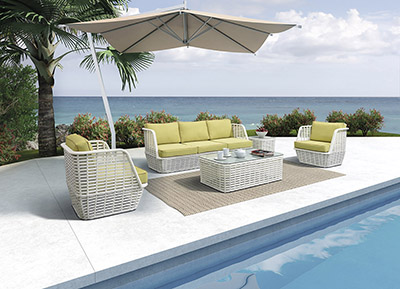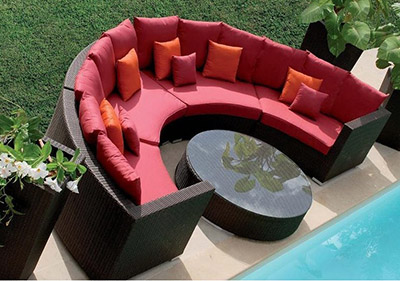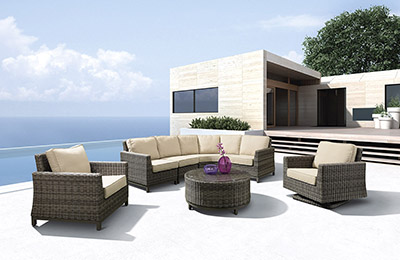Keywords: acrylic resin composite linking material waterborne flexographic ink
1 Introduction
Most of the organic volatiles (VOCs) contained in solvent-based inks are flammable and toxic, causing serious environmental pollution and endangering human health. Long-term inhalation of organic volatiles can cause fatigue, memory loss, or even death. VOCs are directly emitted into the atmosphere. Under UV radiation, photochemical smog or acid mist can form. Some organic volatiles can also damage the atmospheric ozone layer. In order to limit the environmental pollution and harm of VOCs in printing inks, since the 1960s, countries around the world have successively promulgated relevant laws and regulations, and have made strict regulations on the emission of VOCs in inks. New water-based inks have also been developed with the development of new inks that contain micro- or no VOCs, meet environmental requirements, and satisfy printability.
After decades of development and research, water-based inks have made great progress in performance and application. Water-based inks are mainly water-based, combined with non-toxic or low-toxic organic solvents as solvents and thinners, which are not only inexpensive but also suitable for printing. It is well-behaved, non-toxic, aromatic, safe, and environmentally friendly, and it is favored by the printing industry. Different types of aqueous inks have different properties and applications due to the different main film-forming resins used. At present, the most successful applications are water-based flexo inks for maleic anhydride-reinforced rosin resins, acrylic flexo and gravure water-based inks, water-based soybean oil alkyd resin inks, and water-based epoxy resin-concave inks. From the perspective of the application, it is difficult to achieve the optimal characterization of the overall performance of the product using a single type of main film-forming resin in the aqueous ink formulation structure. This topic through the careful selection of synthetic materials, optimization of the synthesis process route to obtain acrylic resin and maleic anhydride addition rosin resin, the two in the presence of neutralizer in the water complex solvent system to form a uniform and stable aqueous binder , The use of this link material and coloring pigments, fillers and additives through the dispersion of the ground to obtain a good overall performance of the water flexographic ink.
2 Experimental development
2.1 Preparation of Aqueous Composite Binder
2.1.1 Synthesis of acrylic emulsions
2.1.1.1 The main raw materials
Acrylic acid, methyl methacrylate, butyl methacrylate, styrene, ammonium persulfate, emulsifier, distilled water of OP-10.
2.1.1.2 Process Operation
A four-neck flask heated with a water bath was equipped with a stirrer, a spherical condenser, a dropping funnel, and a sleeve thermometer. Distilled water and emulsifier were added into a well-equipped four-port reaction flask, stirred and warmed; the monomers were mixed and dropped from the dropping funnel into the bottle, and sodium bicarbonate and ammonia water were added to adjust the pH of the mixture to be 7-8. And open the condensate; when the temperature rises to 75 °C when adding ammonium persulfate, continue to heat up to 85 °C to maintain the reaction for 2 hours, and then heated up to 95 °C reaction 1 hour is the end, white emulsion filter spare.
2.1.2 Synthesis of maleic anhydride addition rosin resin
2.1.2.1 Main raw materials
Maleic anhydride, premium rosin, pentaerythritol.
2.1.2.2 Process Operation
The crushed rosin was placed in a three-necked bottle. The three-necked bottle was equipped with a stirrer, a spherical condenser, and a sleeve thermometer, and was heated with an electric heating jacket. Raise the temperature to 170~180°C, start stirring after opening, reduce condensation by 160°C, add maleic anhydride, control feed rate, prevent overflowing pot, keep at 210~220°C for 2 hours, heat up to 230°C, add pentaerythritol, add After completion of the temperature rise to 260 ~ 265 °C insulation esterification, 2 hours after the measurement of acid value, when AV ≤ 160mgKOH / g immediately discharged.
2.1.3 Preparation of Waterborne Binder
2.1.3.1 The main raw materials
Acrylic copolymer emulsion (homemade), maleic anhydride addition rosin resin (homemade), isopropyl alcohol, ethanol, ethylene glycol, ethyl ether, monoethanolamine, distilled water.
2.1.3.2 Process Operation
Isopropyl alcohol and ethylene glycol ether were put into a three-necked flask, and they were condensed and heated to 40° C., and the pulverized maleic anhydride was added into the rosin resin under stirring. The temperature was raised to 70-75° C., and the temperature was maintained for 2 hours. The resin was dissolved (bottle). In the transparent), ethanol was added at 60°C, acrylic copolymer emulsion and monoethanolamine were added dropwise to the bottle with a dropping funnel, and the dropping rate was suitable for the non-condensate in the system; after the addition was finished, the system was kept at pH=7.5-8.5. , Insulation for 1 hour, the temperature does not exceed 60 °C, the system is uniform and transparent, the viscosity is adjusted with distilled water, filtered out, that is, water-based composite acrylic resin binder.
2.2 Preparation of Waterborne Flexographic Inks
2.2.1 The main raw materials
Waterborne composite acrylic resin binder (homemade), water-based pigments, fillers and additives.
2.2.2 Preparation of ink
Weigh waterborne composite acrylic resin binder in a container, add waterborne pigments, fillers, and additives in an amount, pre-disperse to dry powder, pour into a sand mill (or colloid mill) and grind at about 35°C Degree of standard, out of the packaging, water-based composite acrylic resin ink. (to be continued)
Outdoor Sofa Furniture
Outdoor sofa furniture is suit for outdoor garden usage for long time. The material is UV resistant PE rattan and 1.2mm thickness aluminum frame with powder-coated.
Outstanding comfort and structural integrity make our Outdoor Sofa Furniture Collection a welcome addition outdoors. Rattan fibers are smoothly double woven around concealed powder-coated aluminum frames. Gently angled backs and wide arms encourage restful lounging. The industry`s best high-performing fabrics encase the thick, double-wrapped foam cushions.
· Traditional forms with a spacious, inviting scale
· Handwoven premium resin wicker UV resistant
· Rust-resistant powder-coated frames
· Cushions included with 30 density sofa foam
· Versatile tempered glass tables
· Cushions also available with 100% waterproof fabric.
Outdoor sofa Furniture contain sectional sofa, deep seating sofa, round or semi-round sofa furniture, and garden set.




If you have any questions, please contact with us directly. Outdoor Sofa Furniture are produced
by Golden Eagle Outdoor Furniture With High Quality and Good Appearance. Welcome you can visit our Factory.For any inquiry,Please send mail directly to us.
Rattan Outdoor Furniture,Outdoor Furniture,Outdoor Patio Furniture,Outdoor Garden Furniture,Outdoor Furniture Set
Golden Eagle Outdoor Furniture Co., LTD. , https://www.geoutdoorfurniture.com